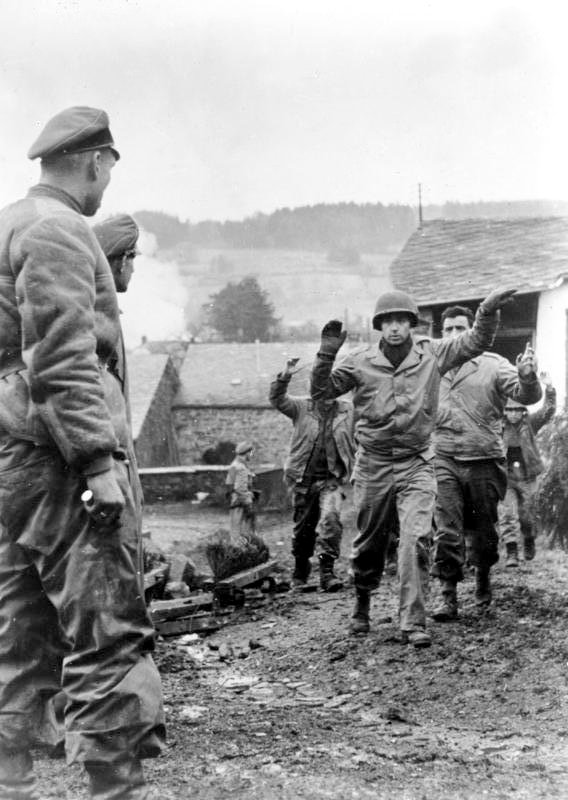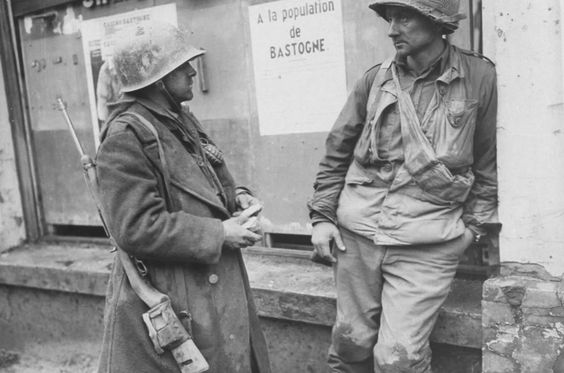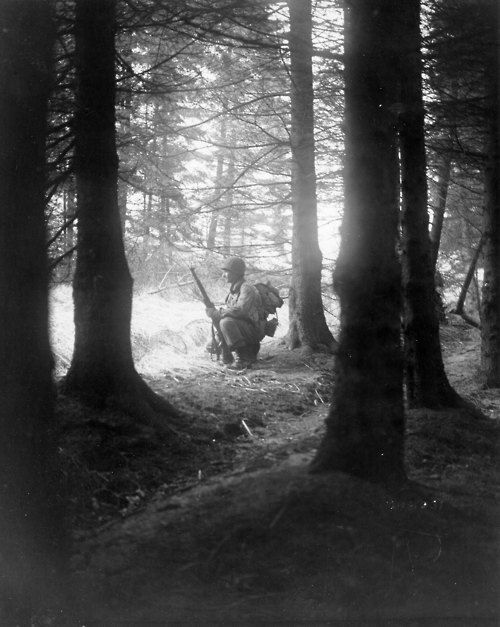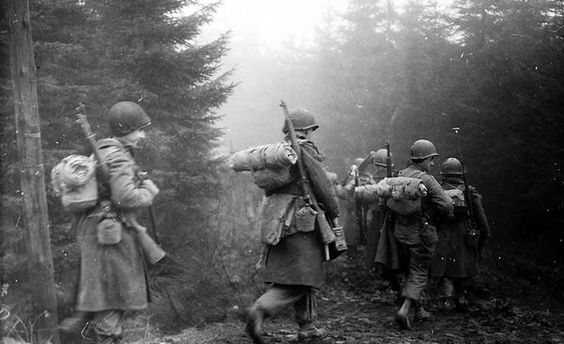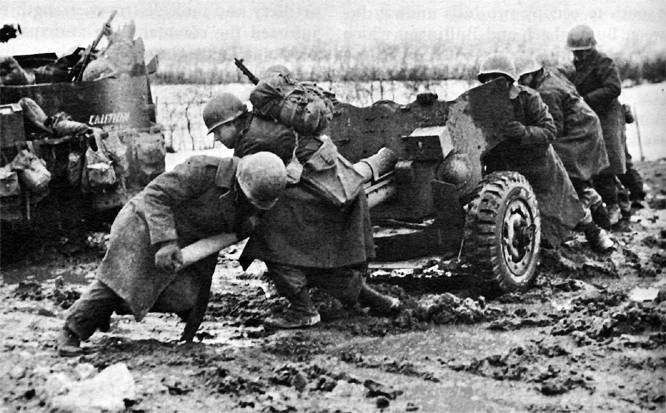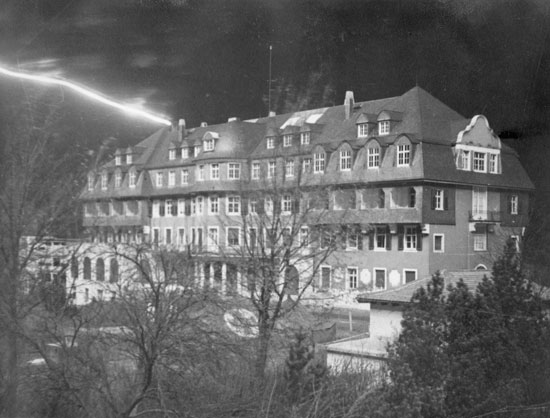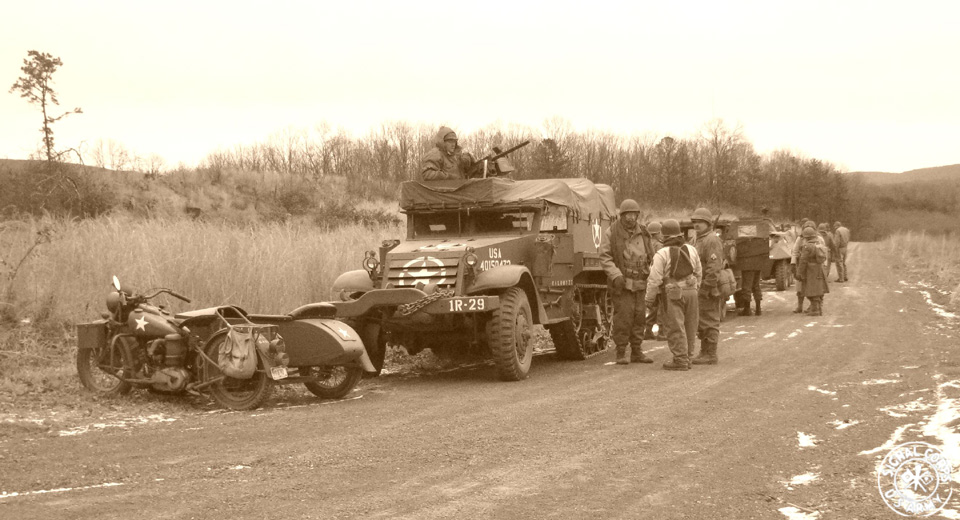Air Operations, CBI
BURMA- 12 10th Air Force B-25s attack a bridge at Hsenwi, a railroad station at Kyaukme, and road junctions at Mongmit and near Kyaukme.
- 42 10th Air Force P-47s attack a truck park and troops and supplies at 4 locations.
- 11 P-47s attack rail targets of opportunity.
- 7 P-47s attack a bridge at Tonbo.
- 4 14th Air Force P-38s attack road traffic between Wanling and Mongyu.
- 16 341st Medium Bomb Group B-25s, escorted by 24 14th Air Force P-40s, attack Pengpu.
- 4 14th Air Force P-51s attack 2 freighters off Hong Kong.
- 2 P-40s attack 2 locomotives at Siyang.
- 13 58th Very Heavy Bomb Wing B-29s unable to attack their primary target in Japan attack Shanghai (a secondary target), and 2 B-29s attack other alternate targets in China.
Air Operations, East Indies
FEAF B-25s, A-20s, and fighter-bombers attack the Kairatoe area on Ceram and targets of opportunity elsewhere in the region.
[Air Operations, Europe
RAF BOMBER COMMANDDaylight Ops:
- 32 Lancasters of No. 3 Group carry out a G-H raid on the railway yards in Trier behind the front on which the Germans are attacking in the Ardennes.
- There are no losses.
- 12 Lancasters of No. 3 Group minelaying in the Kadet Channel off Denmark.
- There are no losses.
GERMANY:
- Unable to attack their assigned targets in Luxembourg, 24 1st Bomb Division B-1s divert against a marshalling yard at Koblenz.
- 82 2nd Bomb Division B-24s divert against a marshalling yard at Ehrgang.
- 8th and 9th Air Force fighter pilots down 15 Luftwaffe fighters over western Germany and eastern Belgium between 1508 and 1535 hours.
- 144 1st Bomb Division B-17s and 62 2nd Bomb Division B-24s attack tactical targets using GH blind-bombing equipment. These attacks are in support of US Army ground forces involved in the Battle of the Bulge.
ETO:
- A small number of 9th Air Force fighters and fighter-bombers are able to support US Army ground forces in Belgium, France, and Germany.
ITALY:
- XXII TAC P-47s attack communications targets near the battle area and gun emplacements around La Spezia.
- During the night, XXII TAC A-20s attack light sources in the Po River valley.
AUSTRIA:
- 15th Air Force B-24s and B-17s attack various marshalling yards throughout the country.
- 15th Air Force heavy bombers attack an oil refinery at Moravska-Ostrava.
- 15th Air Force B-24s attack various marshalling yards throughouth the country.
- B-17s attack oil-industry targets at Blechhammer.
- 15th Air Force B-24s attack a marshalling yard at Sopron.
Air Operations, Japan
Due to bad weather, only 17 of 36 58th Very Heavy Bomb Wing B-29s dispatched from Chengtu, China, are able to attack their primary target, an aircraft factory at Omura. 2 B-29s are lost in accidents.
[Air Operations, Philippines
- The planned renewal of Task Force 38ís pre-invasion bombardment of Luzon is thwarted by bad weather, but FEAF B-24s attack the Legaspi on Luzon.
- V Bomber Command B-25s attack the Fabrica airfield on Negros.
- V Fighter Command P-38s attack the Batangas airfield on Luzon.
- Fighter-bombers attack the Alicante, Bacolod, Dumaguete, Fabrica, and Silay airfields on Negros, the town area at Palompon, and targets of opportunity throughout the central Philippines.
- 2 VMF-218 F4Us down an A6M Zero over the Silay airfield on Negros at 1725 hours.
Air Operations, Volcano Islands
- 27 11th Heavy Bomb Group B-24s and 25 30th Heavy Bomb Group B-24s attack Iwo Jima.
- 14 318th Fighter Group P-38s guided by 3 XXI Bomber Command B-29s strafe Iwo Jima airfields.
- 2 318th Fighter Group P-38s down an A6M Zero over Iwo Jima at 1110 hours.
- During the night, 4 41st Medium Bomb Group B-25s mount snooper raids against Iwo Jima. These are the first such missions by VII Bomber Command B-25s, but B-24s have been conducting such harrassment attacks almost every night of the month.
East China Sea
The American submarine Redfish (SS-395) sinks the Japanese carrier Unryu.
[Eastern Front
SOUTHERN SECTORThe III Panzer Corps is ordered to leave its panzers south of Budapest and march its infantry to Hatvan to reinforce this threatened sector.
[Italy
During the night the V Corps, British 8th Army, resumes its offensive, liberating the Faenza sector.
[Norwegian Sea
U-737 sinks after colliding with the German minesweeper MRS-25.
| Class | Type VIIC |
| CO | Oberleutnant zur See Friedrich-August Greus |
| Location | Norwegian coastal waters, Vestfjord |
| Cause | Collision |
| Casualties | 31 |
| Survivors | Unknown |
Pacific
The US submarine Redfish (SS-395), despite the presence of escorting destroyers, sinks the Japanese carrier Unryu about 200 miles southeast of Shanghai, China. Redfish is damaged in the resultant depth charge attacks and is force to terminate her patrol.
[Philippines
The Japanese decide that they can do no more to send reinforcements or supplies to 35th Army on Leyte. Gen Tomoyuki Yamashita is told by his headquarters that from now on he will have to rely on local resources. Fighting continues south of Limon. Units of the 1st Cavalry Division capture Lonoy on Highway 2 and flank Japanese positions facing the 32nd Infantry Division. The 77th Division advances toward Libongao and Palompon and meet cavalry patrols near Cananga. Valencia has to be defended from a Japanese counterattack. The fighting continues north of Ormoc and throughout the northwest of the island.
On Mindoro the Americans, together with Filipino guerrillas, begin a series of patrol actions in several parts of the island.
[Western Front
At a meeting of the senior Allied commanders at Verdun Eisenhower decides to appoint a single leader each for the areas north and south of the Bulge which is being created. Montgomery is appointed for the northern units and Bradley for the southern. This arrangement will not be made public until January 5, 1945.
On the ground the Germans have reached the Stavelot and Houffalize areas but between these advances some of the US forces are holding their ground around Gouvy and St Vith. Houffalize itself will be defended a little longer by 82nd Airborne Div while 10 miles to the south 101st Airborne is among the force which is preparing to hold the important road junction at Bastogne. All Allied offensive actions against the Rhine are halted because of the German Ardennes offensive. Montgomery is given command of all Allied forces north of the Bulge, Bradley all forces to the south. On both sides of the German breakthrough the US 1st and 3rd Armies re-group in readiness for a coordinated attack, cutting at the base of the salient formed by the advance of the German armies.
[Images from December 19, 1944
|
|
|
|
|
|
|
|
